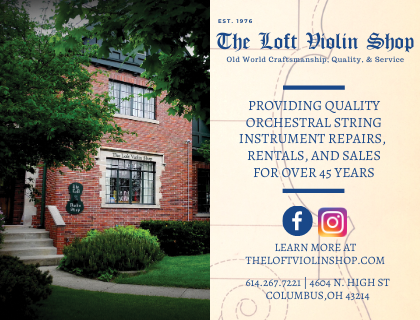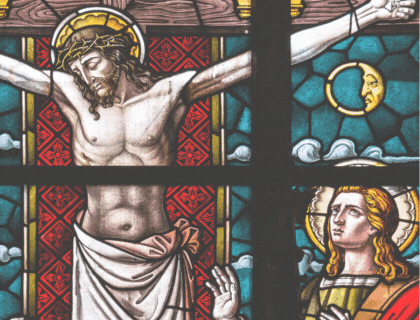(Instrumentation: solo piano, 2 flutes, 2 oboes, 2 clarinets, 2 bassoons, 2 horns, 2 trumpets, trombone, timpani, and strings)
Frédéric Chopin
(Born near Warsaw, Poland in 1810; died in Paris in 1849)
Piano Concerto No. 2 in F Minor, Op. 21
1. Maestoso
2. Larghetto
3. Allegro vivace
Fryderyk (he preferred the French spelling, “Frédéric,” that he has come to be known by) Chopin was born near Warsaw in 1810. By the age of 6 he had mastered the piano on his own and his talents were so instinctive and remarkable that he was soon lauded as “Mozart’s successor.” By age 19, and after several successful concert debuts in Warsaw and abroad, Chopin was searching for a fortuitous career. Although Poland was already defining him as their national composer, financial support there was scant. And thus, he set out for “England by way of Paris” to seek his fortune.
Ultimately, “by way of Paris” became Paris itself. Upon his arrival there in 1831, Chopin’s reputation preceded him, especially burnished by Robert Schumann’s glowing endorsement of him as a “genius.” Chopin quickly found the fame and fortune he had sought, as well as a heady romance with the writer Amantine Lucile Aurore Dupin de Francueil (who went by her pen name, George Sand). He might have imagined returning to the Poland that he continually spoke of with adoration, but in 1831, that notion abruptly became impossible. That same year when Chopin arrived in Paris, Russia invaded Poland and gave no indication of retreating. This Russian occupation of his homeland would remain the situation for the rest of Chopin’s life. He would eventually die of tuberculosis in Paris 18 years later, deeply regretting never having been able to visit his “motherland” again.
Of Chopin’s roughly 270 compositions, many of them are considered masterpieces of the solo piano repertoire, and indeed, he was likely the first composer to focus almost entirely on solo piano works. In addition, he masterfully incorporated Polish folk and dance music into his works, and with such mastery that these dance forms became internationally popular, especially the folk-dance forms the mazurka and the polonaise. Even during his lifetime, Chopin’s name became synonymous with both Poland and solo piano, and at the time, surely aided in the cause of Poland’s plight with Russia. Although the polonaise had by 1831 already been appropriated by the Russian aristocracy as a kind of parade-and-pomp music, Chopin made that dance a thing of serious and Polish beauty, despite his country’s invaders – Schumann called Chopin’s polonaises “cannons buried in flowers.”
But before France, and his eventual international celebrity, Chopin had composed the F Minor Concerto in Warsaw between 1829-30 at the age of 19 as a vehicle for self-promotion. This Concerto exquisitely foretells what will become hallmarks of Chopin’s composing – magical and magisterial piano solo moments, Polish dance and folk elements, and a lyrical Romanticism imbued with intense emotion. Though published as his second (No. 2), chronologically it’s his first and is perhaps the most loved for its meltingly gorgeous middle movement.
The first movement, Maestoso (meaning, performed with a majestic feel), is a marvel of lyricism. The first theme, introduced by the full orchestra, is indeed majestic, but the instruments fall back when the piano solo enters – Chopin always gives the piano priority when he’s writing for it, spotlit without competition from the orchestra. Throughout the movement, the soloist must achieve virtuosic brilliance, but also with a focus on melody and beauty, not bombast and bravura. Notice, too, as was a convention of the time, the elaborate ornamentation in the solo part. Even as these flurries of soft extra notes sparkle and flutter around the melody, they make the pianist’s task devilishly hard – the soloist must achieve the role of a virtuosic poet.
The second movement, Larghetto, is unmistakably a love song, but that of the unrequited. As Chopin himself explained in a letter, when he was studying at the Warsaw School of Music, he became infatuated with another student, Polish soprano Konstancja Gładkowska. Chopin wrote,
“I have – perhaps to my own misfortune – already found my ideal [referring to Gładkowska], whom I worship faithfully and sincerely. Six months have elapsed, and I haven’t yet exchanged a syllable with her of whom I dream every night – she who was in my mind when I composed the Adagio [Larghetto] of my Concerto [No. 2].”
This Larghetto shows Chopin’s deep respect at the time for the music of the Italian opera composer Vincenzo Bellini while being a musical love letter to his soprano heartthrob. The strings open quietly and reverently, as though cautiously opening the door to the heart. The soloist soon steps forth. Its love song is ruminative, as though Chopin is daydreaming about his beloved – the melody is pure and simple while the additional ornamentations are shimmering, even in their quietude, like someone singing in a field filled with thousands of swirling dandelion seeds. The center part of the Larghetto brings on tremolo strings (quickly agitated repeated notes), over which the soloist sings fervently, much like a recitative in an opera. The movement ends with a return of the opening reverence, and the pianist trails off into a deep sleep.
The finale, Allegro vivace, brings the Concerto back from dreams and into the ballroom. The first, main theme is based on a Polish mazurka – that lively Polish national dance in three-beats per bar that Chopin will make internationally famous through his compositions. But there’s a brilliant twist from Chopin’s hand. The finale opens without flash or fancy, just solo piano playing what is basically a waltz over a few soft strings as the first theme. But Chopin has made this movement a Rondo, which will cycle through several themes in succession, always returning to the first theme – as the work progresses, the waltz transforms more and more into a classic mazurka. You can hear this shift as the beat moves from a waltz’s typical emphasis on the first beat to becoming increasingly stronger on the second beat (which sounds like the “wrong” beat). And the liveliness increases, as do several imaginative techniques – listen for the “clicking” col legno moments in the violin, where the performers are instructed to play with the wooden side of their bows. Chopin includes some delightful conversations between the soloist and the orchestra, first with the clarinets, then the French horns. And notice that a classic cadenza (an extended virtuosic solo) does not appear in this movement; rather, the entire finale, indeed, almost the entire Concerto, feels like a glorious, continuing cadenza, with the finger-twisting virtuosics steadily increasing to the last bars. Few pieces by Chopin will ever again approach the delightful playfulness of this finale, nor the outpouring of love in the Larghetto, nor the freshness of elan in the Concerto’s opening movement, which makes this great work always a joy to hear.
© Max Derrickson



